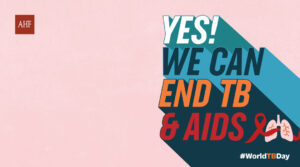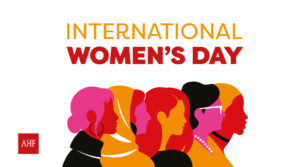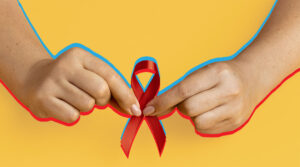This December 1, World AIDS Day, is a date to remind world leaders, global public health institutions and civil society that the AIDS pandemic is not over yet.
Now that the vaccines against COVID-19 have brought a relative “normality” to societies, it is urgent to remember that there is still much to be done in the response to an ongoing pandemic: AIDS, a virus that continues to claim the lives of 650,000 people around the world every year and more than 40 thousand in Latin America and the Caribbean.
Against this background, the AIDS Healthcare Foundation (AHF) will commemorate World AIDS Day 2022 to remind world leaders, global public health institutions and civil society in general that much remains to be done if we are ever to end the pandemic of AIDS. Reports are worrying that the world is lagging behind in reducing new infections and death rates, which means we must redouble our efforts as millions of lives are at stake.
According to UNAIDS 2022 data, up to 46,000 people in Latin America died in one year, and 8,500 in the Caribbean, from causes related to HIV. Almost all of them are preventable 41 years after the epidemic, which indicates that diagnosis and treatment are still not within everyone’s reach. If we let our guard down, AIDS seems like an endless pandemic.
“We were pleased to see the resilience of HIV programs around the world during and after the pandemic. However, the latest data from UNAIDS shows that the global response to HIV and AIDS needs more vigor, making our theme It’s Not Over Yet even more relevant for World AIDS Day this year,” said Terri Ford. , AHF Head of Policy and Global Advocacy.
“We call on key actors and advocates in all countries to intensify global HIV prevention, testing and treatment efforts to curb the rapidly increasing rates of new HIV infections and protect all our valuable gains. We have come too far in the fight against HIV/AIDS to let decades of progress go to waste.”
UNAIDS reported 1.5 million new HIV infections last year, 1 million more than the global target of 500,000, and some 650,000 deaths from AIDS-related illnesses, so AHF calls on the world to reignite the fires of fight to respond to HIV/AIDS by prioritizing Test & Treat and dealing with late HIV diagnoses.
According to the most recent UNAIDS statistics, more than 38 million people are living with HIV/AIDS worldwide and more than 40 million have died of AIDS-related illnesses since the start of the HIV epidemic. While millions of people today have access to life-saving antiretroviral therapy, millions more still desperately need it.
“Latin America was a successful region to implement treatment and serve communities with the highest incidence, such as gay and Trans communities, among others. But UNAIDS data shows that there is a rebound, said Dr. Patricia Campos López, head of the Bureau for Latin America and the Caribbean. “Similarly, the waves of migration with increasingly restrictive and stigmatizing measures have changed the face of HIV in almost all of our countries.”
“We only have eight years to reach the 2030 goal of ending AIDS as a global health threat. Economic, social, cultural and legal inequalities must be urgently addressed. In a pandemic, inequalities only exacerbate the danger for everyone. In fact, the end of AIDS can only be achieved by standing up to the inequalities that drive it. World leaders must act with bold and responsible leadership.” he pointed.
Key communities
UNAIDS data have shown an increased risk of new infections among gay men and other men who have sex with men (MSM) worldwide. As of 2021, UNAIDS key population data shows that MSM are at 28 times the risk of contracting HIV compared with people of the same age as heterosexual people, while people who inject drugs are at 35 times the risk sex workers 30 times the risk and transgender women 14 times the risk. Key populations represent less than 5% of the world’s population, but they and their sexual partners made up 70% of new HIV infections in 2021
Decrease in treatment
The global number of people on HIV treatment in 2021 had the slowest growth in more than a decade. And while three-quarters of all people living with HIV have access to antiretroviral treatment, 10 million people are still denied it, and only half (52%) of children living with HIV can access it life-saving drugs. Thus, the gap in HIV treatment coverage between children and adults is widening rather than narrowing.
Millions of preventable HIV infections each year make it increasingly difficult and expensive to ensure that people living with HIV have access to life-saving treatment and that the targets to end the AIDS pandemic by 2030 are met. .
Actions required by States in the response to HIV and AIDS
- Promote community-led and people-centered services; support for the human rights of all; the removal of punitive and discriminatory laws; the fight against stigma; the empowerment of girls and women; equal access to treatment, including new health technologies; and health services, education and social protection for all.
- Make human rights and gender equality a reality. Punitive and discriminatory laws and policies are undermining the AIDS response by diverting people from services and undermining public health efforts to reach people most at risk of new infection or death.
- Support and resource effective community-led responses. Community-led responses are proving revolutionary in reducing inequalities and supporting effective and resilient responses to HIV.
- Ensure sufficient and sustainable financing. It is essential that international donors and governments of low- and middle-income countries make significant investments in HIV.
- Address inequalities in access to and outcomes of HIV prevention, testing and treatment, and close the gaps that exist in specific locations and for certain groups.
- Increase the availability, quality and appropriateness of HIV treatment, testing and prevention services, so that all people receive the care they need. Reform laws, policies and practices to address the stigma and exclusion faced by people living with HIV, key population groups and marginalized populations.
The AIDS Healthcare Foundation (AHF) is the world’s largest organization in the fight against AIDS, currently providing medical care and/or services to more than 1.6 million people in 45 countries including the United States and the regions of Africa, Latin America / Caribbean, the Asia/Pacific region and Eastern Europe.
Find out where to get a free HIV test in Latin America and the Caribbean at https://ahflatamycaribe.org/





